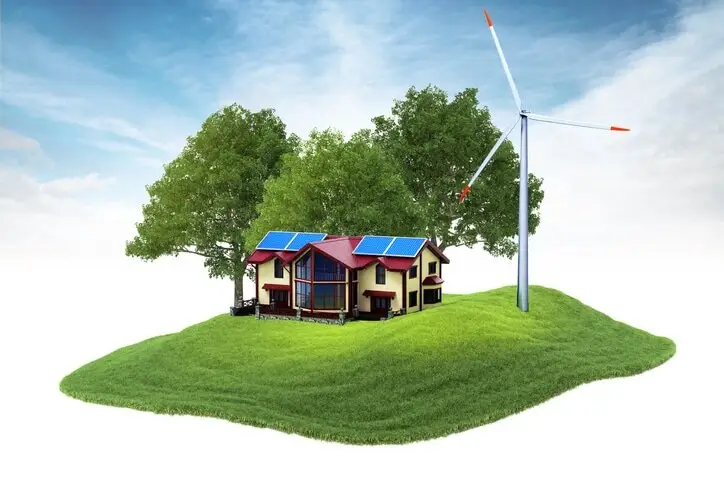The Benefits of Using Renewable Energy Sources for Your Microgreen Growing Operation

Introduction
As the world becomes increasingly aware of the importance of sustainable practices, adopting renewable energy sources has become a significant trend across various industries. In the realm of agriculture, microgreen growing operations can also benefit from transitioning to renewable energy. This article will explore the advantages of using renewable energy sources for your microgreen growing operation, highlighting the positive impact it can have on environmental sustainability, operational costs, and overall business success.Environmental Sustainability
One of the primary benefits of using renewable energy sources, such as solar, wind, or hydroelectric power, for your microgreen growing operation is the reduced environmental impact. Unlike traditional energy sources, renewable energy generates electricity without depleting natural resources or emitting greenhouse gases. Here’s how it contributes to environmental sustainability: a. Carbon Footprint Reduction: Microgreen growing operations powered by renewable energy sources significantly reduce carbon emissions. By eliminating or minimizing reliance on fossil fuels, the operation becomes carbon-neutral or even carbon-negative, helping combat climate change. b. Improved Air Quality: Traditional energy sources like coal or natural gas contribute to air pollution, leading to respiratory issues and environmental degradation. Renewable energy, on the other hand, produces clean electricity, reducing harmful air pollutants and improving local air quality. c. Conservation of Water Resources: Certain renewable energy sources, such as solar or wind power, require minimal to no water for operation. This conserves valuable freshwater resources that would otherwise be consumed by conventional power generation methods, benefiting both your microgreen operation and the broader ecosystem.Cost Savings
Transitioning to renewable energy sources for your microgreen growing operation can have long-term financial advantages. Although the initial investment might seem higher, the following factors contribute to cost savings in the long run: a. Reduced Energy Bills: Generating your own renewable energy can significantly reduce or eliminate monthly energy bills. Once the renewable energy system is installed and operational, the ongoing costs are minimal compared to traditional energy sources that rely on fossil fuels. b. Government Incentives: Many governments offer incentives, tax credits, or grants to encourage the adoption of renewable energy systems. Taking advantage of these programs can offset the initial installation costs, making renewable energy more financially viable for your microgreen operation. c. Energy Independence: By generating your own renewable energy on-site, you become less reliant on the fluctuating costs of grid electricity. This stability in energy costs can provide greater control and predictability for your business, reducing the impact of rising energy prices.Brand Image and Marketing Advantage
Incorporating renewable energy into your microgreen growing operation can enhance your brand image and provide a competitive edge in the market. Customers today are increasingly conscious of environmental sustainability and are more likely to support businesses that prioritize green practices. Here’s how renewable energy can positively impact your brand: a. Eco-Friendly Reputation: Using renewable energy sources aligns your microgreen growing operation with sustainable practices, demonstrating your commitment to environmental stewardship. This reputation can attract eco-conscious consumers who value businesses that prioritize sustainability. b. Differentiation and Marketing Opportunities: Incorporating renewable energy into your business story offers unique marketing opportunities. Highlighting your use of renewable energy sources in your branding, website, and promotional materials can set you apart from competitors and attract customers who actively seek out environmentally responsible businesses. c. Community Engagement: Embracing renewable energy can position your microgreen operation as a positive contributor to the local community. Engaging with community organizations and participating in sustainable initiatives can further enhance your brand image and build customer loyalty.Resilience and Future-Proofing
Renewable energy sources provide resilience and future-proofing for your microgreen growing operation by offering stability, adaptability, and long-term sustainability: a. Energy Security: Generating your own renewable energy ensures a stable and consistent power supply for your microgreen operation. This reduces the risk of disruptions caused by power outages or fluctuations in the energy grid, allowing you to maintain productivity and meet customer demands. b. Adaptability to Remote Locations: Renewable energy systems, such as solar panels or small wind turbines, can be installed in remote areas without access to traditional power grids. This opens up new possibilities for microgreen growing operations in rural or off-grid locations, eliminating the need for costly infrastructure investments. c. Technological Advancements: Renewable energy technologies continue to evolve and improve, becoming more efficient and cost-effective over time. By adopting renewable energy sources for your microgreen growing operation now, you position yourself to benefit from future advancements, ensuring the long-term sustainability and competitiveness of your business.Community Engagement and Partnerships
Transitioning to renewable energy sources for your microgreen growing operation can foster community engagement and open doors for collaboration: a. Collaboration with Energy Providers: Many energy providers are expanding their renewable energy portfolios. By demonstrating your commitment to sustainability, you may be able to partner with local energy providers to access green energy solutions or even contribute excess renewable energy back to the grid. b. Community Support and Partnerships: Embracing renewable energy can resonate with the local community and build positive relationships. Engaging in sustainability initiatives, participating in community events, or sharing knowledge about renewable energy can foster goodwill and potentially lead to partnerships with like-minded organizations or individuals.Practical Considerations for Implementing Renewable Energy
Before implementing renewable energy sources for your microgreen growing operation, consider the following practical aspects: a. Energy Assessment: Conduct an energy audit to determine your current energy usage patterns and identify areas where energy conservation measures can be implemented. This will help you size the renewable energy system appropriately. b. System Design and Installation: Consult with renewable energy professionals to design and install a system tailored to your specific needs. They can guide you on the appropriate technology, system capacity, and integration with existing infrastructure. c. Regulatory Compliance: Familiarize yourself with local regulations, permits, and incentives related to renewable energy installations. Ensure that your project adheres to building codes, zoning requirements, and safety standards. d. Maintenance and Monitoring: Renewable energy systems require regular maintenance and monitoring to ensure optimal performance. Develop a maintenance plan and schedule routine inspections to maximize the lifespan and efficiency of your system.Conclusion
Transitioning to renewable energy sources for your microgreen growing operation offers a multitude of benefits. From environmental sustainability and cost savings to enhanced brand image and future-proofing, adopting renewable energy aligns your business with the growing global commitment to sustainability. By harnessing clean and renewable energy sources, you contribute to a greener future while reaping the practical advantages for your microgreen growing operation. Embrace the power of renewable energy and watch your business thrive in harmony with the environment.Disclaimer
The information provided in this article is for educational and informational purposes only and is not intended as medical advice. It is not a substitute for professional medical advice, diagnosis, or treatment. Always seek the advice of a qualified healthcare provider with any questions you may have regarding a medical condition. The author and publisher of this article are not responsible for any adverse effects or consequences resulting from the use of any suggestions, preparations, or procedures described in this article.

